At 13, Bianca Vallentine tie-dyed socks and underwear and sold them to a local store. During her high school years, she altered clothes from her local secondhand store in Western Australia: “I’d wear what I made to school and would often sell it on the spot, so I always needed a backup outfit.” She went on to get a joint degree in fashion and textile design from Curtin University in Perth. Soon after, in 2004, she launched her label, The Vallentine Project, as a women’s wear line, and initially stuck to the traditional seasonal fashion cycle, but she eventually shifted to focusing on what she calls “conceptual challenges.”
A vacation spent road tripping across California made her want to work on a larger scale, and the canvas-tarp bedding at the Ace Hotel in Palm Springs, in particular, got her thinking about a new direction. That’s how she began treating doona (Australian for “duvet”) covers as her canvases. Based in Melbourne, she produces a limited-edition line of linen bedding (and some tablecloths too) patterned with geometric paintings and subtle embroidery. The designs have an undeniable neo-hippie look—and vibe: “When I’m creating bedding, I’m thinking about rest and what will get someone to that state,” Vallentine says. “A lot of what I design is quite graphic, but it’s representational rather than specific; I like to leave room for imagination.” Count us among the intrigued.
Photography by Penny Lane, unless noted, courtesy of the Vallentine Project.
Linen Duvet Covers and Pillowcases


The painted sections retain their hand-brushed look, but the treatment process ensures a smooth, even surface. Vallentine specialized in screen printing in college, but chose hand painting for her bedding, she says, because it’s hard to heat-set large pieces of screen-printed fabric and to achieve the extreme softness she was after. She uses a special paint “made locally by a team of chemists and carefully tested for safety.”





Tablecloths

The tablecloths come in one size—145 by 250 centimeters—and cost $120 AUD. The Chalk Dashes Tablecloth is shown here. Photograph by Bobby Clark.


Also don’t miss A Flag for Every Family from Two Paris Artists, our post on a French couple who make painted linen banners.
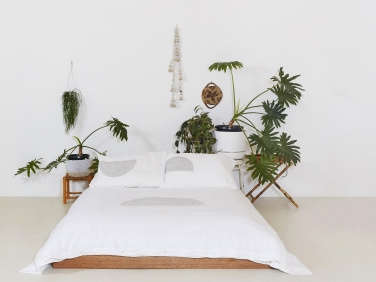
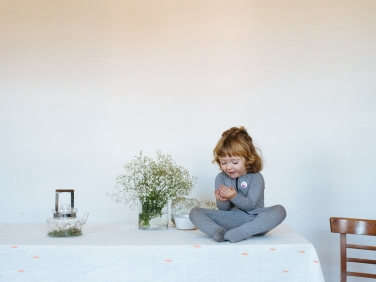
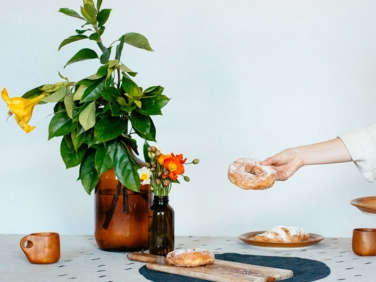
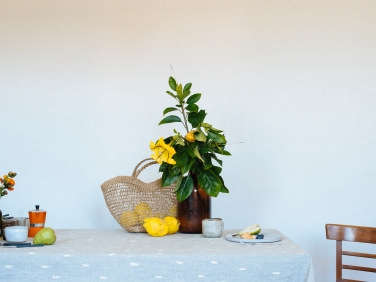
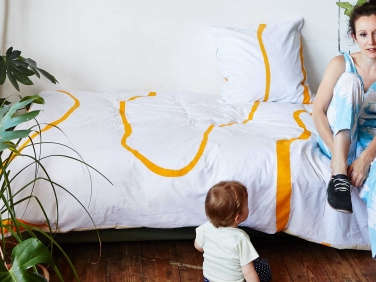
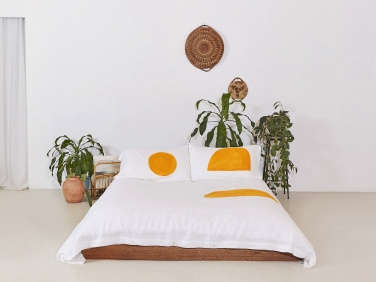
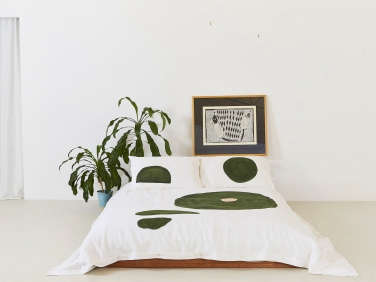
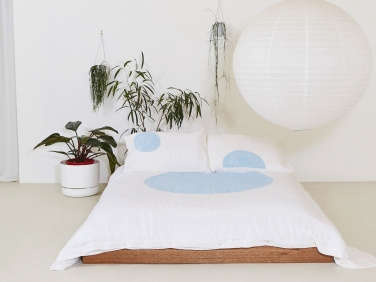
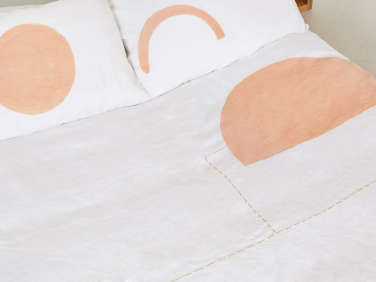
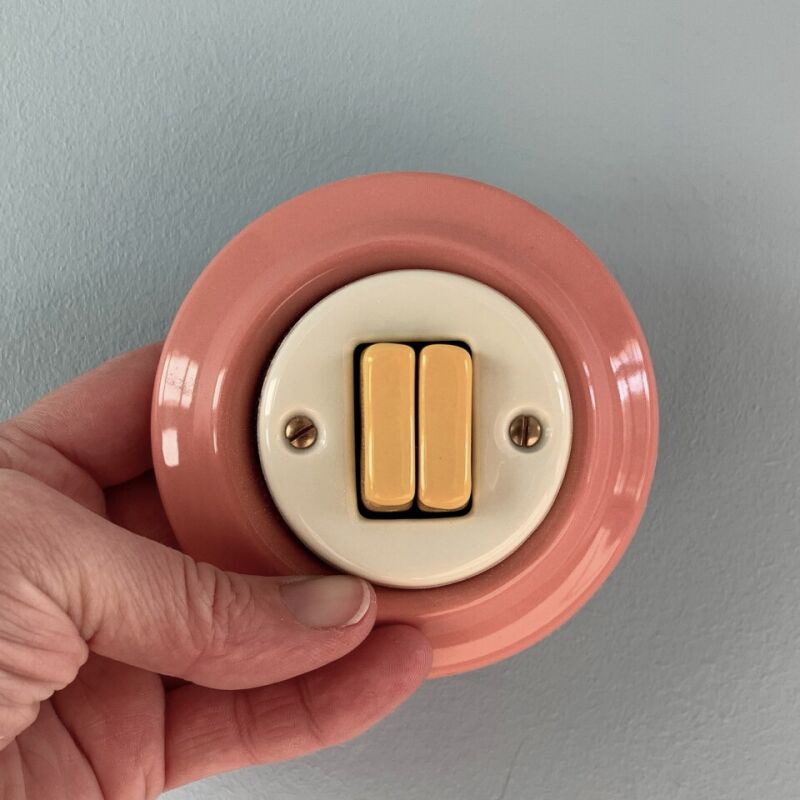
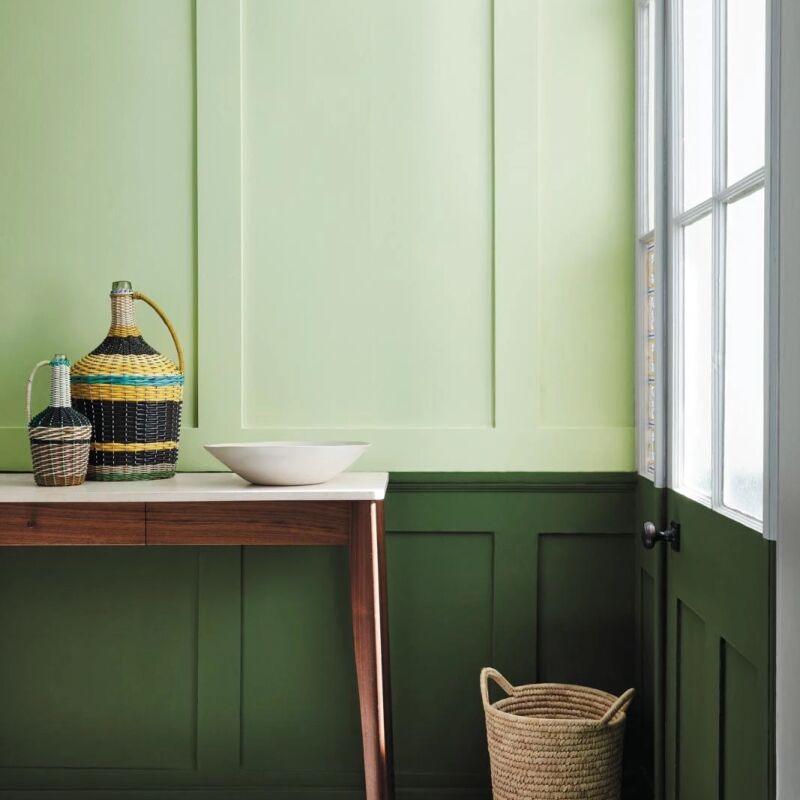
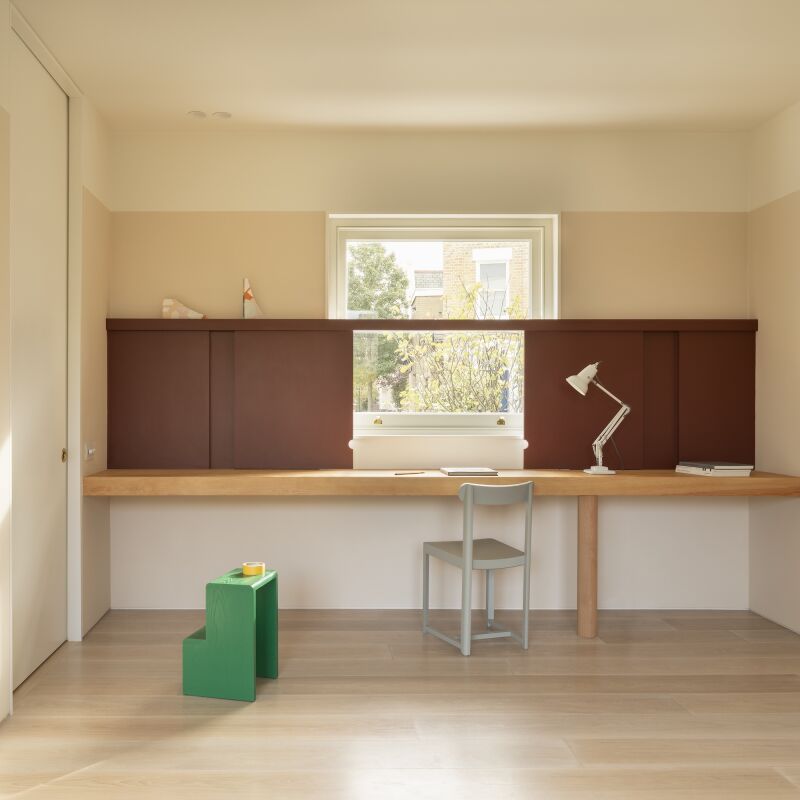

Have a Question or Comment About This Post?
Join the conversation (0)